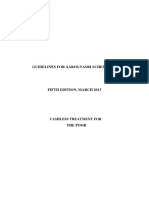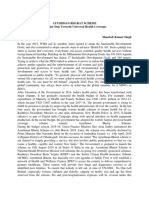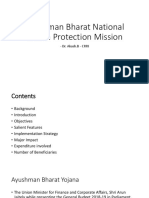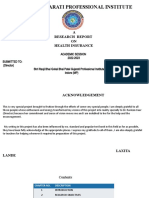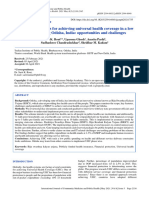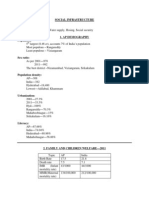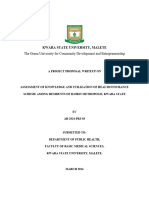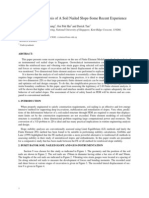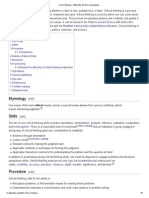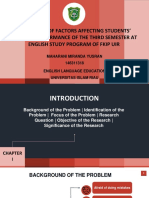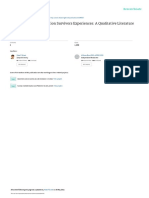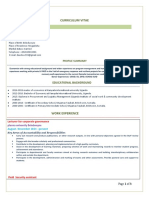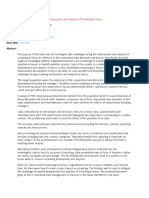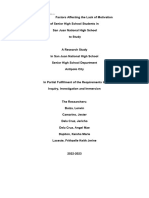0% found this document useful (0 votes)
20 views28 pagesHC Dissertation
The dissertation by Mohammed Ateeb Ali focuses on the Aarogyasri scheme, a health insurance initiative by the Telangana and Andhra Pradesh governments aimed at providing free medical treatment to Below Poverty Line (BPL) families. It evaluates the scheme's impact on patient health outcomes, identifies challenges faced by patients, and measures patient satisfaction, highlighting the importance of accessibility and awareness in utilizing the services. The study also addresses operational challenges, supplier-induced demand, and the need for improvements in healthcare infrastructure to enhance the effectiveness of the scheme.
Uploaded by
haqtivistCopyright
© © All Rights Reserved
We take content rights seriously. If you suspect this is your content, claim it here.
Available Formats
Download as DOCX, PDF, TXT or read online on Scribd
0% found this document useful (0 votes)
20 views28 pagesHC Dissertation
The dissertation by Mohammed Ateeb Ali focuses on the Aarogyasri scheme, a health insurance initiative by the Telangana and Andhra Pradesh governments aimed at providing free medical treatment to Below Poverty Line (BPL) families. It evaluates the scheme's impact on patient health outcomes, identifies challenges faced by patients, and measures patient satisfaction, highlighting the importance of accessibility and awareness in utilizing the services. The study also addresses operational challenges, supplier-induced demand, and the need for improvements in healthcare infrastructure to enhance the effectiveness of the scheme.
Uploaded by
haqtivistCopyright
© © All Rights Reserved
We take content rights seriously. If you suspect this is your content, claim it here.
Available Formats
Download as DOCX, PDF, TXT or read online on Scribd
/ 28


